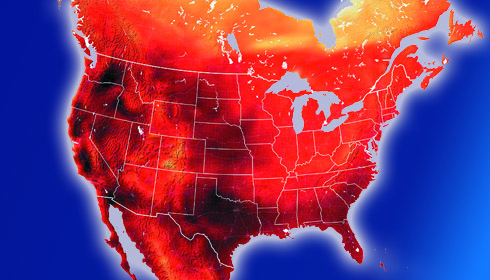
New Research Warns of Lower Heat Tolerance Limits in Humans
A study conducted by the University of Ottawa’s Human and Environmental Physiology Research Unit (HEPRU) has indicated that human thermoregulation, which refers to the body's capacity to sustain a stable internal temperature in extreme heat, could be more susceptible than earlier assessments suggested. The study conducted by Dr Robert D. Meade and Dr Glen Kenny highlights the increasing necessity for climate adaptation strategies in response to rising global temperatures.
The research involved subjecting volunteers to extreme heat and humidity, revealing that numerous regions are nearing conditions that exceed human physiological limits. Researchers have employed thermal-step protocols, a method developed over many years, to establish that the safe upper limit for thermoregulation is considerably lower than previously indicated by earlier models.
Participants experienced temperatures reaching 42°C accompanied by 57% humidity, resulting in a humidex value of around 62°C. The findings were significant: core body temperatures rose uncontrollably, and numerous subjects were unable to withstand the complete nine-hour exposure duration. The findings validate previous models and indicate that the thresholds for human heat tolerance are notably low.
This research corresponds with an expanding collection of scientific studies that highlight concerns regarding heat stress and climate change. A study published in Nature Climate Change in 2022 indicated that by the year 2100, almost three billion individuals may be exposed to "extreme heat conditions," exceeding the physiological thresholds for safe human functioning. A study published in Environmental Research Letters (2021) indicates that the frequency of extreme heatwaves has more than doubled since 1980, a trend attributed to human-induced climate change.
Data from the Intergovernmental Panel on Climate Change (IPCC) indicate a significant increase in the number of days with wet-bulb temperatures exceeding 35°C, a critical threshold for human survival, over the past two decades. The findings of the HEPRU study indicate that even lower thresholds present significant health risks, highlighting the need for immediate action.
The recent findings carry significant consequences for urban planning, health policies, and strategies for climate adaptation. As temperatures continue to rise, it is essential for cities to enhance their infrastructure to address heat exposure. This includes the development of more green spaces; the expansion of cooling centres; and the implementation of stricter workplace safety regulations for outdoor labourers.
A report from the World Health Organisation (WHO) in 2021 projects that, without effective mitigation strategies, heat-related deaths may increase fourfold by the year 2050. The report highlights the significance of combining physiological data with climate models to anticipate and address future heat-related issues.
This study highlights the increasing frequency of extreme heat events and underscores the limitations of human adaptation to such conditions. Collaboration among governments, scientists, and policymakers is essential for the implementation of heat-resilient strategies aimed at ensuring public safety in a world that is warming at an accelerated pace.
Dr Kenny states, “Integrating physiological data with climate models aims to enhance our ability to predict and prepare for heat-related health issues.” In light of the ongoing climate uncertainty, research of this nature plays a vital role in informing proactive policies aimed at protecting human health from unprecedented heat exposure.